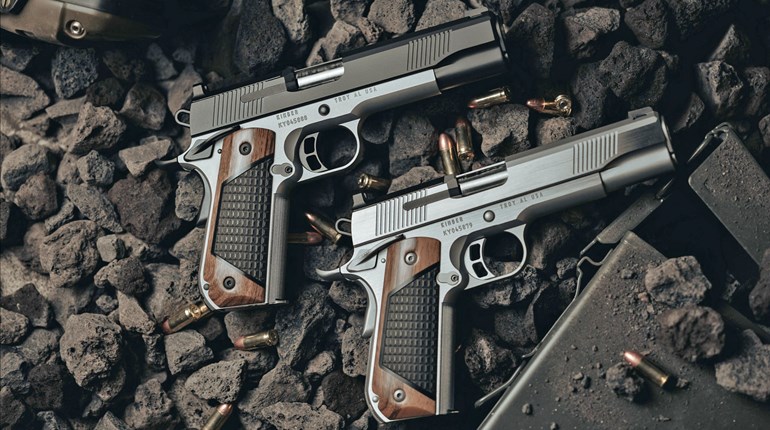
The defensive shooter is really blessed to have so many good handguns from which to choose his or her personal-defense gun. With due diligence and study, a person can nearly always find just the handgun that suits their personal needs. But, in this day of semi-automatic pistols, it is wise not to overlook the tried-and-true snubnose revolver. They’ve been around for a long time and that is simply due to the fact they meet the defensive needs of a lot of folks.
Short-barreled revolvers really became popular in the latter half of the 19th century. Numerous jurisdictions began to outlaw the open carrying of handguns, and wheelguns with stubby barrels were easier to keep tucked away and out of sight. Probably the Colt Sheriff’s Model was the first true snubnose, followed by various break-top revolvers in both single- and double-action variants.
However, the advent of the modern snubnose occurred in the early 20th century with Colt and a fellow named J.H. FitzGerald. FitzGerald, a Colt employee, was known to do an early combat conversion of the company’s double-action handguns. On the large-frame Colt 1917 and New Service models, he would shorten the barrels to 2 inches, bob the hammer and cut out the front of the trigger guard. Later, he turned his attention to the smaller-frame Police Positive and Police Positive Special. Called the Fitz Special, these custom revolvers were quite popular with savvy handgunners of that era.
Fitz Specials became so popular that, in 1927, Colt began to offer a 2-inch, round-butt version of the Police Positive Special (without the trigger guard modification) that came to be called the Detective Special.
About 1936, Smith & Wesson followed with a 2-inch version of its Military & Police revolver that today is known as the Model 10. Since those days, numerous snubnose revolvers have been offered by firearms manufacturers. Even to the present day, they are built by Colt, Smith & Wesson, Ruger, Kimber and a number of other companies.
Through the years, I’ve owned and used a number of the short-barreled guns. I’ve still got the 2-inch Military & Police .38 Spl. that my uncle—the gun guy in our family—wore as religiously as he did his pants. The Colt Detective Special has been another favorite of mine and I recently found a nice, early model that I plan to have turned into a Fitz Special to honor Mr. FitzGerald and his era.
While not everyone’s cup of tea, the snubnose revolver has several things going for it that appeal to many defensive shooters, not the least of which is that many people find the guns easy to operate and to remember how they operate. It may be one of the best choices for the person who wants a defensive handgun, but is not active in the shooting sports.
Another advantage is that, with experimentation, the shooter can find a set of pistol stocks (grips) that fit his or her hand. In addition, snubbies can be found in small, super lightweight, five-shot configurations, right on up to the big blasters in .44 Mag. When you’re talking snubnose revolvers, there is something to suit just about every taste.
As early as the 1920s, FitzGerald pointed out that the snubnose makes it difficult to take the gun away from a person. That short barrel just doesn’t give a crook much leverage in an attempt to wrestle the gun out of your hands.
While the snubbie may be easy to learn to shoot, however, it is a difficult gun to shoot well. The long, double-action trigger pull makes it tough to shoot accurately, and the defensive shooter might consider having a gunsmith perform an action job on this revolver. With an action job and some practice, the defensive shooter will have little trouble making effective hits on target.
One of the current manufacturing fads is to build snubnose revolver frames out of aluminum alloy, titanium or some other super-light material, and then chamber them in .357 Mag. These little blasters are not fun to shoot, and the felt recoil is anything but comfortable. Instead of going for the lightest gun possible, the shooter is well advised to select a revolver in a weight and caliber that he or she can shoot accurately and in relative comfort. Revolvers that are too lightweight are uncomfortable to shoot. Discomfort causes flinching, which causes one to miss the target. Missing in a gunfight is not good.
When a person is searching for a defense gun that really suits them, the snubnose double-action revolver is worth consideration. Select one that is of a weight and caliber that you can shoot quickly and accurately. Search the available stock selections until you find a set that really fits your hand. Then have a pistolsmith tune-up the action. Loaded with ammunition optimized for short barrels, you’ve got a fighting handgun that is personalized to your particular needs.


































